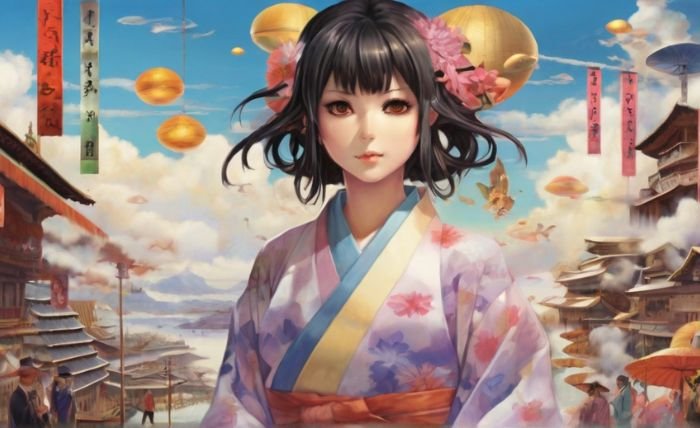Embracing Strength: The Tale of Mitsuri Kanroji
 Introduction
Introduction
Few characters in the universe of Demon Slayer: Kimetsu no Yaiba have the same combination of compassion and strength as Mitsuri Kanroji. Mitsuri, also referred to as the Love Hashira, travels a path of self-acceptance and discovers that real strength comes from within.
Who is Mitsuri Kanroji?
The Love Hashira, also known as Mitsuri Kanroji, is a significant supporting figure in “Demon Slayer: Kimetsu no Yaiba.” She is distinguished not only by her unusual pink and green hair but also by her outstanding position as a member of the select group of Demon Slayers.
Early Life and Struggles
Since the Meiji Period, Mitsuri has always been unique. She stands out from the crowd thanks to her extraordinary strength and distinct muscular makeup. Despite social limitations and the challenge of fitting in, Mitsuri’s encounter with the Demon Slayers’ leader Kagaya Ubuyashiki changed her life. She joined the Demon Slayer Corps as a result of his encouragement for her to embrace her individuality.
Mitsuri’s Abilities
There is no physical talent like Mitsuri’s. Her strength is significantly greater than that of the average person due to her distinct muscular composition. This strength is a representation of her unbreakable spirit rather than merely being physical.
Love Breathing Technique
The love breathing technique, which is a variation of the flame breathing style, was developed by Mitsuri. With the help of this move, which displays her flexibility and agility, she may battle demons with strength and grace.
Mitsuri’s Impact on the Demon Slayer Corps
Mitsuri had a significant influence on the Demon Slayer Corps as the Love Hashira. She set an example for future generations in the fight against demons with her power and special abilities.
The Love Hashira
A key character in the series, Mitsuri Kanroji, is notable for her striking appearance and lively attitude, in addition to her special love breathing method. Her voluptuous form and pink and green hair defy the stereotype of a female warrior in a culture where men predominate.
Unyielding Strength
Because of the makeup of her muscles, Mitsuri has remarkable physical strength despite her kind demeanor. However, because of cultural expectations that caused her to doubt her value and ability, this power used to be a source of internal turmoil for her.
A Journey of Self-Discovery
The narrative of Mitsuri is endearing and realistic. She was the youngest of five siblings born during the Meiji Period, and because of her unusual strength and hair color—which came from a diet high in sakura mochi—she was first perceived as a freak. Her battle to fit in with society caused her to repress who she was until she met Kagaya Ubuyashiki, the Demon Slayers’ leader, who altered her viewpoint.
The Power of Love Breathing
Mitsuri’s fighting technique, Love Breathing, embodies the theme of her character, which is to embrace individuality. She created the look on her own, using inspiration from Flame Breathing, demonstrating her versatility and inventiveness.
Conclusion
The tale of Mitsuri Kanroji serves as a potent reminder that it is our diversity that defines our strength. Her persona inspires us to value our individuality and to put our skills to good use by defending and uplifting others.
FAQ
How does Mitsuri function in Demon Slayer? One of the primary supporting characters is Mitsuri Kanroji, who is the Demon Slayer Corps’ Love Hashira.
Why does Mitsuri have green and pink hair? She ate a lot of sakura mochi, which gave her a unique hair color that reflected her strength and unusual personality.
What message is Mitsuri’s character trying to convey? Mitsuri’s character personifies the theme of self-acceptance and celebrating one’s uniqueness as a source of strength.
Has Mitsuri developed a unique breathing style? Yes, Mitsuri created her breathing style—love breathing—that is exclusive to her persona after failing to master the flame breathing technique taught by Kyojuro Rengoku.
- Anime & Manga
